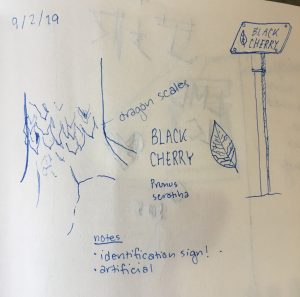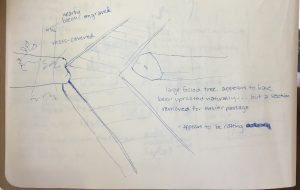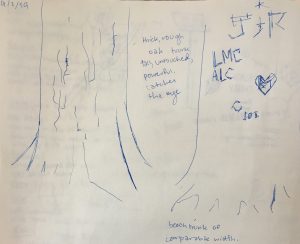The very first tree that drew my attention was a Black Cherry tree, or prunus serotina. The bark was jagged and richly colored, and it immediately caught my eye in contrast to the surrounding beech and oak trees. I only needed to glance a yard away from the trunk to discover its species: between the boardwalk and the tree stood a small signpost.

The boardwalk’s path shifted direction. A tree had been uprooted directly where the angle changed, and it might have laid across the boardwalk for people to climb over. The base of the tree, a few yards from the boardwalk, was messy to someone so used to order and organization. Roots jutted out haphazardly and clods of dirt hung from them. Where the fallen tree met the boardwalk, the trunk was cut cleanly; a boardwalk-width sized section was gone, probably cut away to allow people to wander through.

A thick, sturdy oak tree towered over the boardwalk, standing out among the thinner, younger trees in its vicinity. On the other side of the path, just a few yards away, there stood a beech tree of comparable width. The oak’s bark was still rough. To my untrained eye, it appeared to be untouched. The beech tree’s once smooth bark was carved with various letters and initials.

